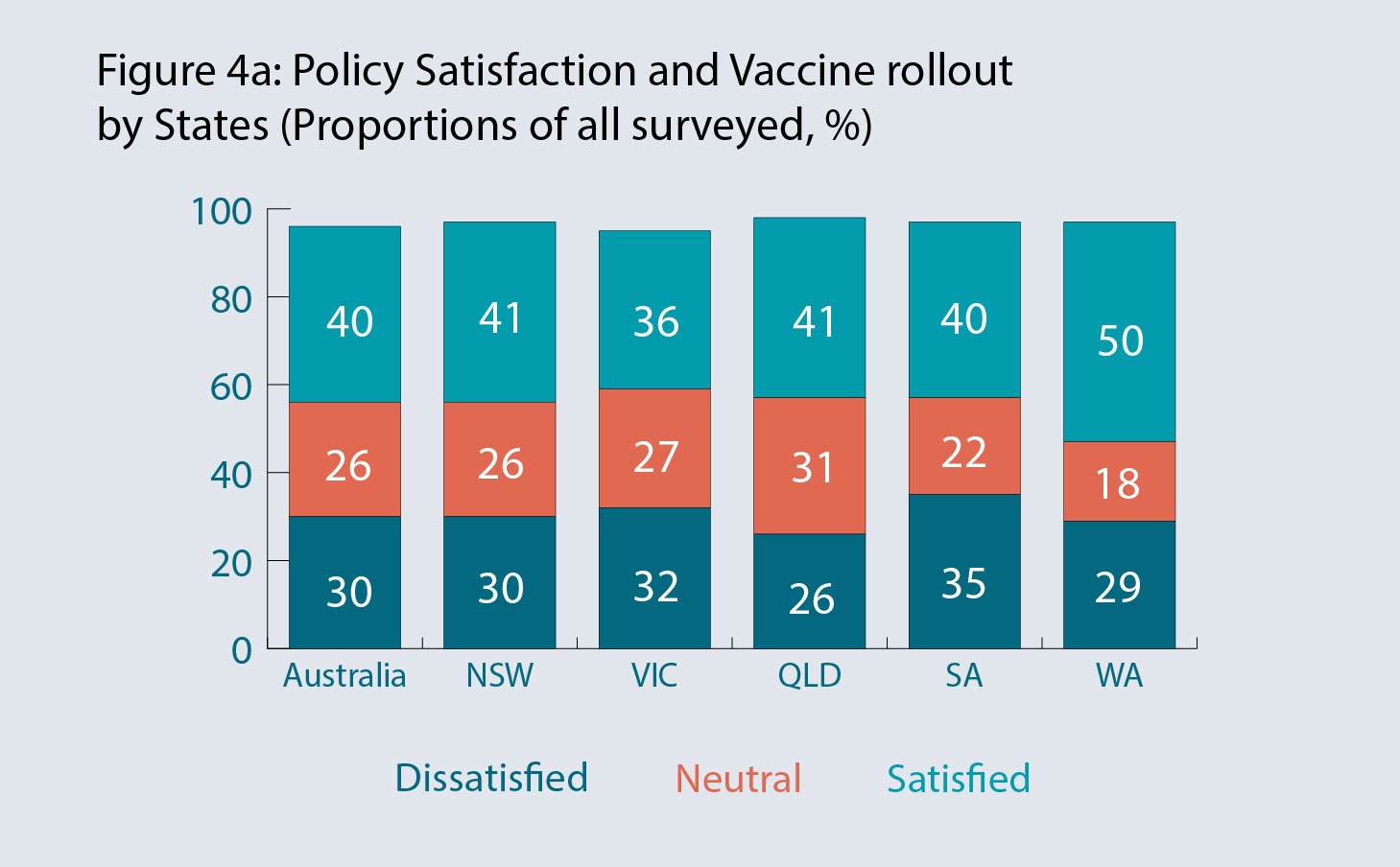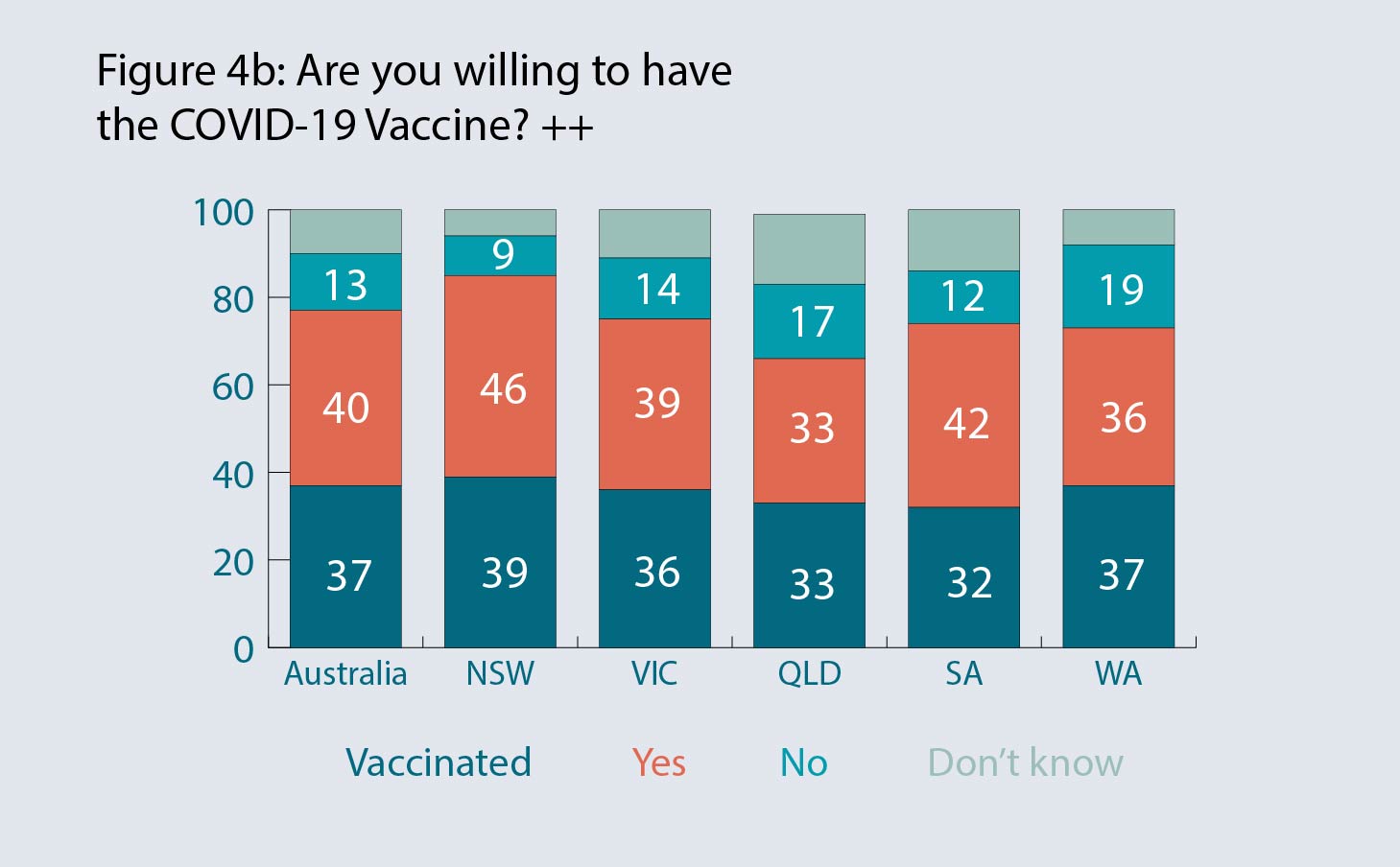Will different restrictions for unvaccinated people increase the take-up of the vaccine?
To date, our representative survey of Australian adults indicates that 29 per cent have had their first dose of the COVID-19 vaccine and 8 per cent have had a second dose. The rest are either willing to be vaccinated (40%), not willing to be vaccinated (13%) or don’t know whether they want to be vaccinated (10%). For more information about vaccine hesitancy across Australia, see the Vaccine Hesitancy Tracker.
In the latest survey conducted in the first week in July, we considered whether having different restrictions for vaccinated and unvaccinated people would tip the scale towards more vaccinations. A clear majority of Australians agree that fully vaccinated people should be allowed to participate in activities without any restrictions (Figure 1).

Around half of respondents also agree with the practice of banning unvaccinated people from certain activities, but almost 1 in 4 Australians disagree with this approach (Figure 2). Furthermore, it is not clear that tighter restrictions for the unvaccinated would reduce vaccine hesitancy by much, as the responses from those unwilling or unsure of getting vaccinated (23 percent) suggest that only about a quarter of them would likely get vaccinated if activity bans for the unvaccinated were to be implemented (Figure 3).
Most Australians (42-61 percent) agree to banning unvaccinated people from participating in certain public events and activities, but a sizable proportion (between 24-34 percent) disagreed with this proposed practice.
A significant 40-54 per cent of the group currently unwilling or don’t know if they want to be vaccinated, would be unlikely to get vaccinated even if they were to be banned from participating in certain activities
Dissatisfaction with government policies to keep people at work is trending down
The proportion of Australians reporting satisfaction with policy has been trending down and is now at 40 per cent, compared to about 60 per cent in April 2020. About 1 in 3 Australians still express dissatisfaction with government policy in the latest survey.
Highs and lows across the mainland states…
- More people in NSW are willing to be vaccinated (46%) and mental distress is also highest in NSW (26%), reflecting the recent COVID-19 outbreak and lockdown in the state;
- VIC has the lowest proportion of people satisfied with policy (36%), despite having the highest proportion of people who are financially comfortable (50%);
- QLD had the most people neutral about policy (31%), the highest proportion unwilling or don’t know about vaccination (33%) and the lowest proportion financially stressed (17%);
- Dissatisfaction with policy is highest in SA (35%), and the proportion of people in financial stress is also the highest (30%);
- WA had the highest proportion of people satisfied with policies (50%) and the lowest proportion experiencing mental distress all to most of the time (16%).


+ Financial stress refers to the situation of having difficulties paying for essential goods and services while financial vulnerability refers to being in financial stress or making ends meet.
++ The question about feeling depressed is about assessing symptoms/experiences and not about assessing the presence of a clinical diagnosis or disorder. The responses are calibrated on a 5-point scale covering: all, most, some, little, none of the time.
* The survey contains responses from 1200 persons, aged 18 years and over. The sample is stratified by gender, age and location to be representative of the Australian population.
**This Report is written by Professor Guay Lim and Dr Viet Nguyen.
© The University of Melbourne – Melbourne Institute: Applied Economic & Social Research, 2021. This work is copyright. The material may be reproduced and distributed for non-commercial purposes only, subject to the inclusion of an acknowledgment of the source(s).